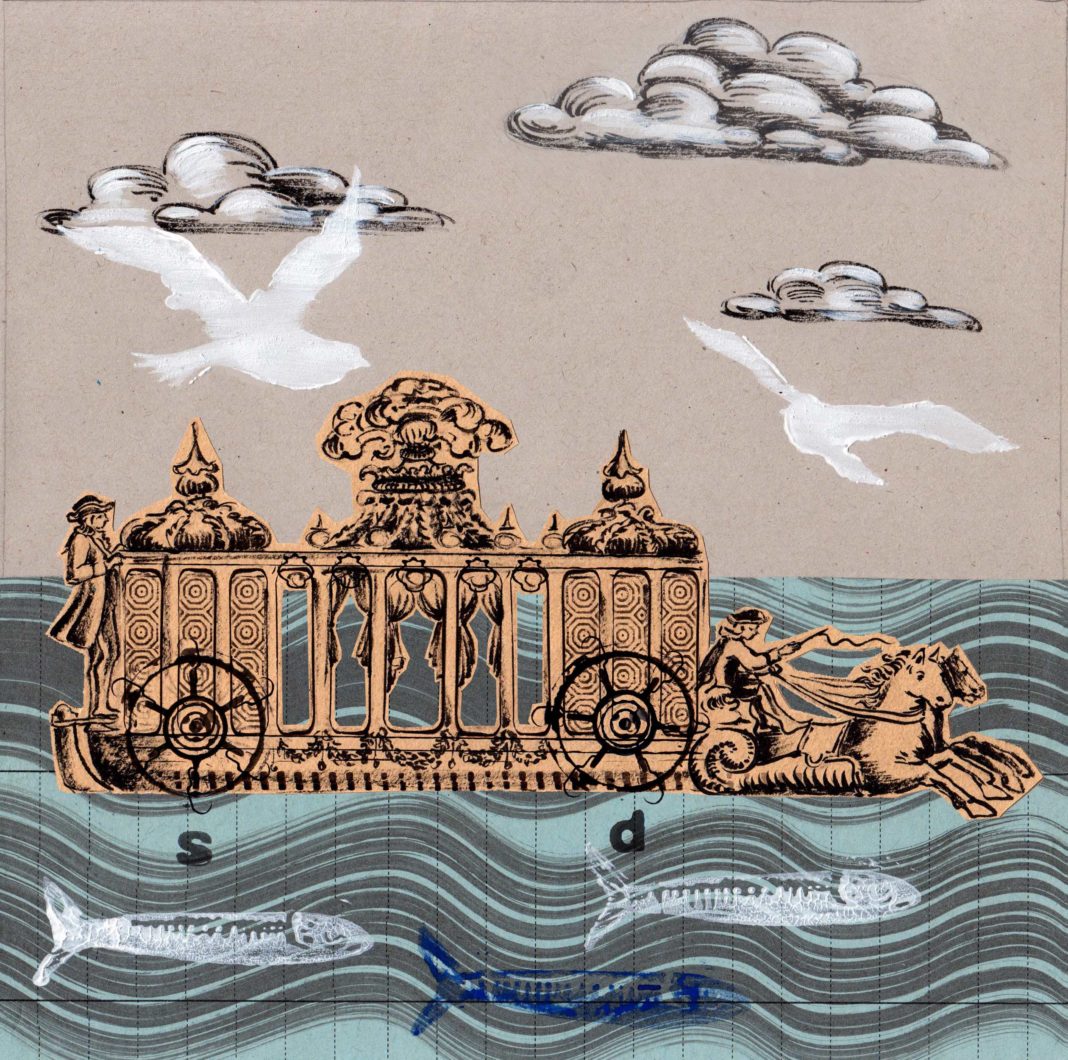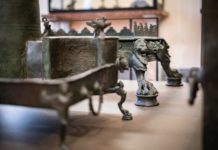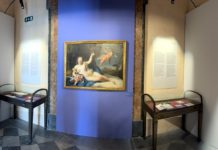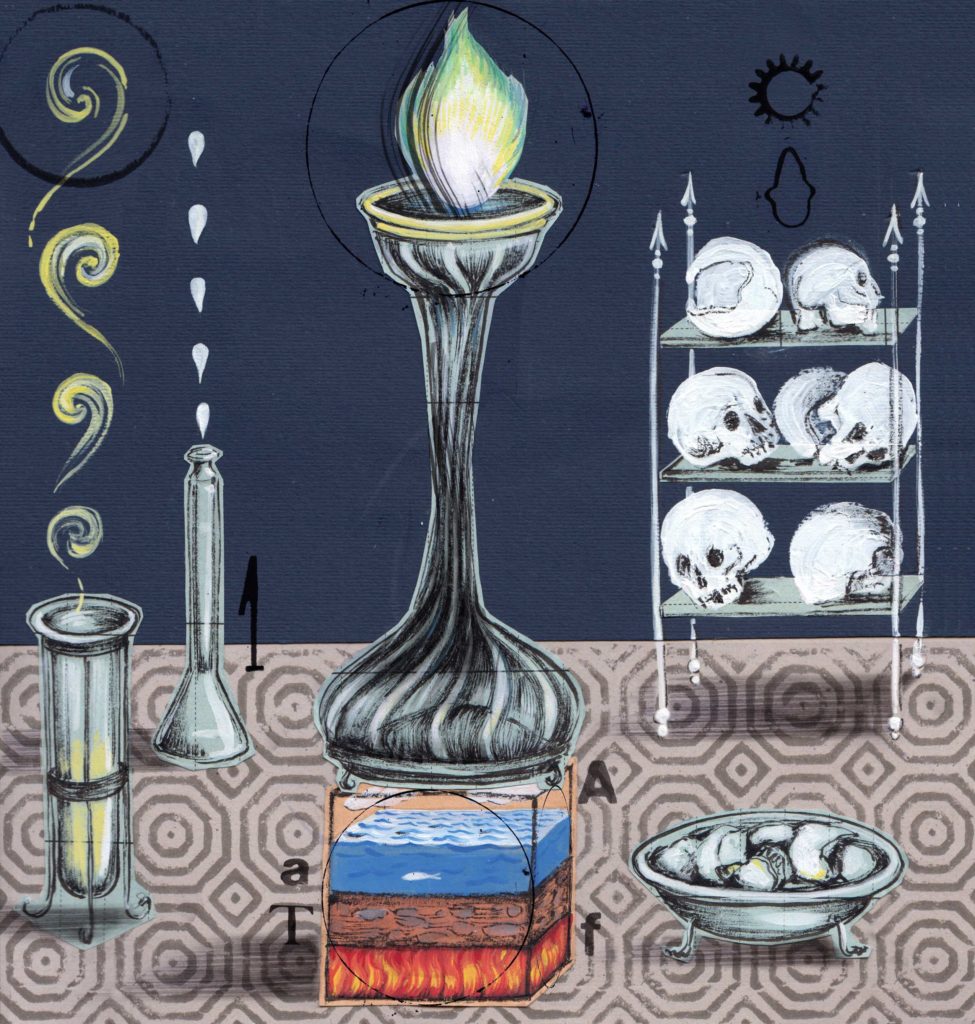
In copertina, la carrozza marittima
Libertà e sperimentazione. Lui, il principe massone e ribelle, inventore proteso verso il futuro, pioniere brillante di un pensiero controcorrente.
Lei vede la luce oltre due secoli e mezzo dopo: tra Settecento e Novecento, un filo sottile li unisce, intrecciato da bellezza e creatività.
Raimondo di Sangro, celebre aristocratico che ha lasciato al mondo intero un esempio di sensibile armonia (policroma) con la sua Cappella/Museo nel cuore antico di Napoli, rilanciato dai suoi eredi nello stile che più gli appartiene, con attenzione al passato, proiettato nel futuro grazie alla tecnologia e, dunque, mediante i social: lo testimonia la lunga fila multilingue che si forma ogni giorno davanti all’ingresso, in attesa di ammirare il Cristo velato, scolpito da Giuseppe Sammartino e le altre meraviglie custodite in questo prezioso scrigno barocco.
Daniela Pergreffi, emiliana d’origine, ma adottata da Napoli dove insegna all’Accademia di belle arti, cammina tra grafica, pittura, installazioni, ispirata dalle sfumature della quotidianità.
Dopo essersi confrontata con questa personalità così affascinante e complessa nel 2017, realizzando il graphic novel Il segreto della Fenice (alós edizioni) che lo ha come protagonista, Daniela lo avvista di nuovo nella singolare mostra che s’inaugura domani, martedì 30 gennaio, dalle 18 alle 20,30.
A farli rincontrare è la direttrice del Museo Cappella Sansevero, Maria Alessandra Masucci (curatrice dell’esposizione) che da un paio di anni pensava di trasformare in immagini gli appunti visionari dell’illustre parente.
Ed ecco “Haravec” percorso espositivo attraverso 14 tavole illustrate: nella navata della Cappella, sarà svelata (in una teca) la carrozza marittima (una sorta di pedalò ante litteram), affiancata all’incisione settecentesca originale di Giuseppe Aloia, eseguita sul lavoro di Francesco Celebrano, nato dal progetto del principe. Unica creatura del principe a essere stata disegnata nell’epoca in cui visse.
Ma l’anima della mostra si sviluppa nella vicinissima Off gallery del collezionista d’arte Beniamino Manferlotti, aperta all’oggi, tuttavia scavata nel tempo, tra una colonna greca, la città romana e il fascino del Seicento.
Sulle pareti, oltre alle opere realizzate dall’artista, anche frasi riportate liberamente, senza traccia a matita, con raffinati caratteri, da Valerio Sannino, già allievo di Daniela all’Accademia, specializzato in grafia. Sono quelle dei contemporanei di Sansevero, tra questi, quella del letterato Giuseppe Maria Galanti: Si poteva dire di lui[…] che conteneva in sé un’accademia intera (1792).
Il titolo della mostra riprende la definizione che Raimondo di Sangro dette di sé stesso, nella sua principale opera letteraria (alla “Lettera Apologetica dell’Esercitato Accademico della Crusca), usando l’antica lingua degli Incas del Perù precolombiano: haravec significa inventore.
E l’autrice, esplorando i documenti d’archivio del principe, ne rappresenta per la prima volta le geniali invenzioni: farmaci miracolosi, gemme artificiali, il vetro colorato, il lume perpetuo, la riproduzione (scientifica) del miracolo di San Gennaro… Mescolando segni manuali con impronte di oggetti quotidiani (chiavi, bulloni, tappi) e materiali di recupero.
Non manca la raffigurazione dei fuochi pirotecnici avvolti nella forma di paesaggi e templi (fu lui a creare per la prima volta una pioggia esplosa nel colore verde). E ancora il pubblico potrà ammirare l’archibugio che sparava a polvere e ad aria compressa, pur avendo una sola canna (regalato poi a Carlo di Borbone) e un cannone leggerissimo, che aveva però una gettata superiore a quelli che venivano generalmente utilizzati a quel tempo.
La mostra, che verrà inaugurata nel giorno del compleanno del principe, sarà aperta al pubblico a dal 31 gennaio fino al 4 marzo. E potrà essere visitata, nella prima settimana, da mercoledì 31 gennaio a lunedì 5 febbraio; da quella successiva, dal venerdì al lunedì (dalle ore 9:30 alle ore 18:30).
Ingresso libero alla Off Gallery (via Ramondo di Sangro, 20). A pagamento con obbligo di prenotazione al Museo Cappella Sansevero.
©Riproduzione riservata
Per saperne di più
www.museosansevero.it
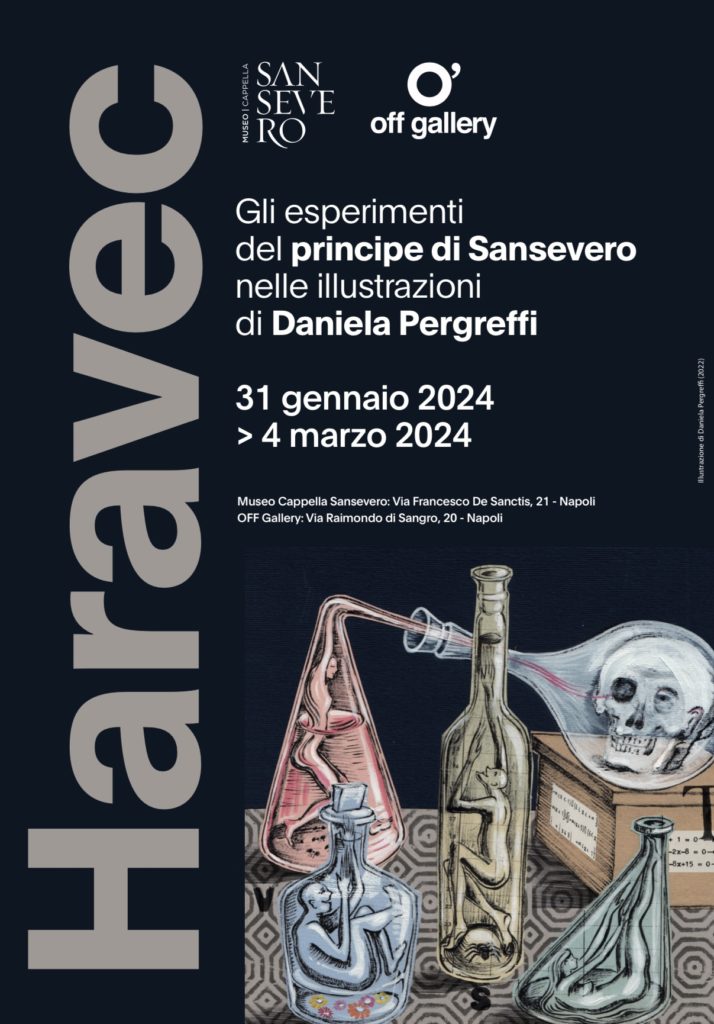
The exhibition/ Sansevero Chapel & Off Gallery: “Haravec,” Daniela Pergreffi gives shape and shades to the experiments of the inventor prince
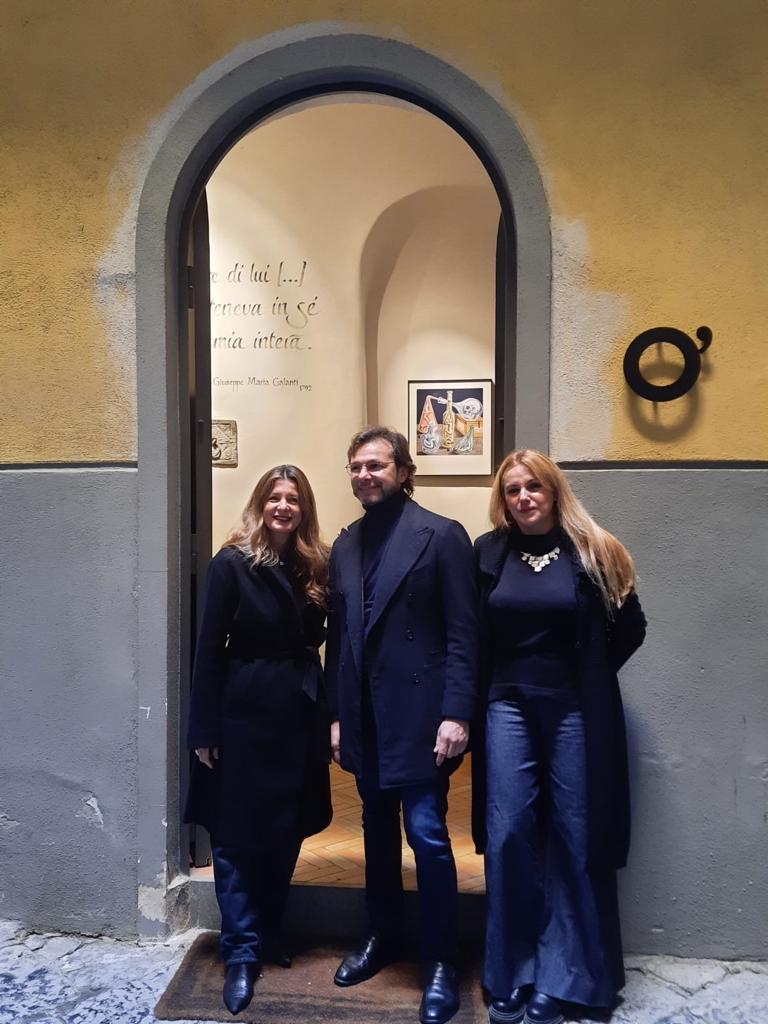
Freedom and experimentation. He, the Mason and rebel prince, inventor stretching towards the future, brilliant pioneer of unconventional thinking.
She, born well over two and a half centuries later: between the 18th and 20th centuries, a thin thread unites them, interwoven with beauty and creativity.
Raimondo di Sangro, famous aristocrat who left the whole world an example of sensitive (polychromatic) harmony with his Chapel/Museum in the ancient heart of Naples, relaunched by his heirs in the style that most belongs to him, with attention to the past, projected into the future thanks to technology and, therefore, through social media: this is testified by the long multilingual queue that is formed every day in front of the entrance, waiting to admire the Veiled Christ, sculpted by Giuseppe Sammartino, and the other wonders kept in this precious Baroque casket.
Daniela Pergreffi, Emilian by origin but adopted by Naples where she teaches at the Academy of Fine Arts, walks among graphics, painting, installations, inspired by the nuances of everyday life.
After facing this fascinating and complex personality in 2017, producing the graphic novel Il segreto della Fenice (alós edizioni) that features him as its protagonist, she meets him again in the remarkable exhibition opening tomorrow, on Tuesday, January 30th, from 6 to 8:30 p.m.
Bringing them together again is the director of the Sansevero Chapel Museum, Maria Alessandra Masucci (curator of the exhibition), who for a couple of years has been thinking of turning the illustrious relative’s visionary notes into images.
And here’s “Haravec”, exhibition itinerary through 14 illustrated plates: in the nave of the Chapel, the sea-going carriage (a sort of ante litteram pedal boat) will be unveiled (in a display case), side by side with the original 18th-century engraving by Giuseppe Aloia, executed on the work of Francesco Celebrano, which originated from the prince’s project. The prince’s only creature to have been drawn in the era in which he lived.
But the soul of the exhibition unfolds in the nearby Off Gallery of art collector Beniamino Manferlotti, open to the present day, yet dug into time, among a Greek column, the Roman city and the charm of the 17th century.
On the walls, in addition to the works created by the artist, there are also sentences written with refined characters by Valerio Sannino, a former student of Daniela’s at the Academy, specialized in handwriting. They are those of Sansevero’s contemporaries, among them that of the literary man Giuseppe Maria Galanti: of him it could be said […] that he contained in himself an entire academy (1792).
The title of the exhibition takes up the definition that Raimondo di Sangro gave of himself in his most important literary work (the “Lettera Apologetica dell’Esercitato Accademico della Crusca”), using the ancient language of the Incas of pre-Columbian Peru: haravec means inventor.
And the author, studying the prince’s archival documents, depicts for the first time his ingenious inventions: miraculous phrmaceuticals, artificial gems, stained glass, the eternal flame, the (scientific) reproduction of the miracle of San Gennaro… A mixture of hand prints with impressions of everyday objects (keys, screws, caps) and recycled materials.
There is no lack of representations of fireworks wrapped in the form of landscapes and temples (it was he who first created an exploding rain in the color green). The public will also be able to admire the arquebus, which fired gunpowder and compressed air, although it had only one barrel (later given to Charles of Bourbon) and a very light cannon, but with a greater throw than those generally used at the time.
The exhibition, inaugurated on the Prince’s birthday, will be open to the public from January 31st to March 4th. And it can be visited, in the first week, from Wednesday, January 31st to Monday, February 5th; in the following week, from Friday to Monday (9:30 to 18:30).
Admission is free at the Off Gallery (Via Raimondo di Sangro, 20). Tickets must be booked at the Sansevero Chapel Museum.


